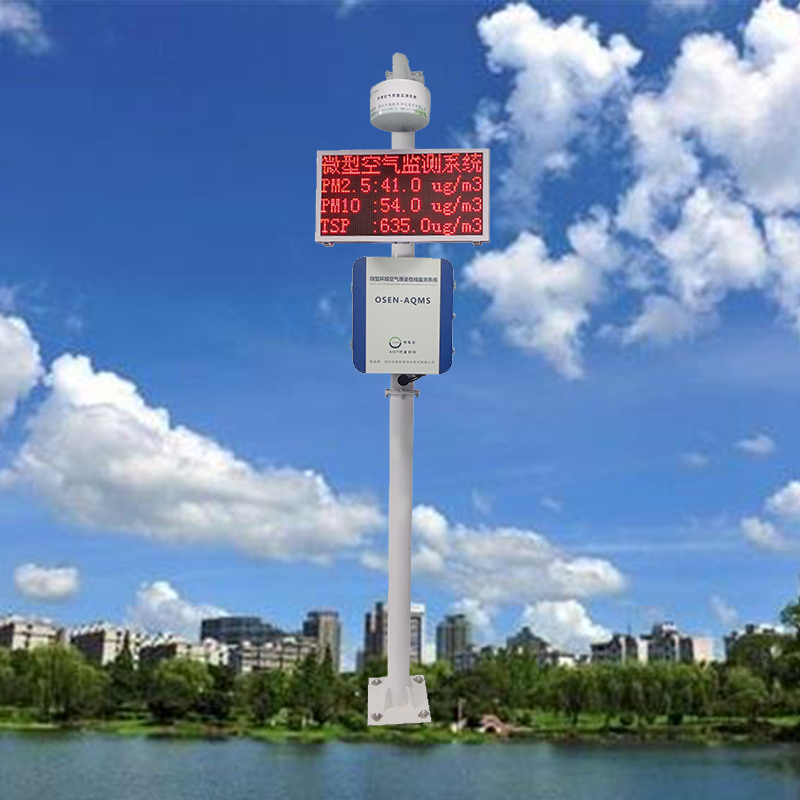As society’s attention to environmental quality continues to increase, air quality monitoring has become a key link in environmental protection and management. Although traditional large-scale air quality monitoring stations can provide relatively accurate data, they have the problems of high construction costs and limited layout density. It is difficult for them to achieve refined coverage of small-scale areas such as urban neighborhoods, the vicinity of industrial parks, and residential areas, resulting in delayed identification of local pollution sources and capture of subtle changes in pollutant diffusion. At the same time, when responding to sudden pollution incidents and evaluating air quality in specific areas (such as the vicinity of schools and hospitals), more flexible and quickly deployable monitoring methods are needed. Under such circumstances, mini air quality monitoring stations, with their characteristics of small size, relatively low cost, and ability to be densely deployed, can fill the gaps in traditional monitoring networks, build a more refined monitoring system, and meet the needs of grid-based air quality management, accurate traceability of pollution sources, and the public’s real-time understanding of the environmental quality around them. Thus, they have gradually become an important supplementary force in the field of air monitoring.
The mini ambient air quality monitoring system is an unattended environmental monitoring device that integrates the functions of data collection, storage, transmission, and management, and can automatically monitor environmental conditions continuously around the clock. On the basis of providing data on 7 parameters including PM10, PM2.5, sulfur dioxide, nitrogen dioxide, carbon monoxide, ozone, and volatile organic compounds, the system can also expand the monitoring range of meteorological parameters. In accordance with the concept of "dividing areas into grids, clarifying responsibilities based on grids, and assigning responsibilities to individuals", a regional grid-based monitoring platform with "comprehensive horizontal coverage and in-depth vertical extension" is built. It applies and integrates a number of smart environmental protection technologies, and on the basis of fully understanding and analyzing the emission status of pollution sources and meteorological influencing factors, it is deployed by flexibly setting up monitoring points according to actual conditions.
The system can count the equipment monitoring data of various industrial parks and monitoring points in real time, and analyze and infer the overall emission situation in the region based on the environmental conditions and pollution status of each monitoring point. Furthermore, it realizes functions such as overall monitoring of hot-spot emission areas, calculation of pollutant diffusion trends, and analysis of emission sources. At the same time, by integrating, sharing, and developing advanced technologies such as the Internet of Things, intelligent collection systems, geographic information systems, and dynamic chart systems, a comprehensive, refined, information-based, and intelligent regional environmental online monitoring platform is built. This platform aims to achieve comprehensive management goals such as controlling unorganized emissions of pollution sources and reducing air pollution, provide reliable data information and scientific auxiliary management decisions for the formulation of energy conservation and emission reduction plans, and also provide detailed data materials and scientific bases for environmental decisions, environmental management, and pollution prevention and control work of environmental protection departments.
Detection parameters: PM2.5, PM10, carbon monoxide (CO), sulfur dioxide (SO2), nitrogen dioxide (NO2), ozone (O3), VOC, temperature, humidity, wind speed, wind direction, atmospheric pressure, noise
Measurement range: 0-1000 (for PM2.5/PM10), 0-3000 (for CO), 0-4000 (for SO2), 0-3000 (for NO2), 0-1500 (for O3), 0-40PPM (for VOC), -50-100 (for temperature), 0-100 (for humidity), 0-70 (for wind speed), 0-360 (for wind direction), 10-1100hpa (for atmospheric pressure), 40-120db (for noise)
Units: ug/m? (for PM2.5/PM10), ppb (for CO/SO2/NO2/O3/VOC), ℃ (for temperature), %RH (for humidity), m/s (for wind speed), ° (for wind direction), hpa (for atmospheric pressure), db (for noise)
Resolution: 1ug/m? (for PM2.5/PM10), 0.01PPM (for CO), 0.001PPM (for SO2/NO2/O3/VOC), 0.1℃ (for temperature), 1% (for humidity), 0.1m/s (for wind speed), 0.1° (for wind direction), 0.1hpa (for atmospheric pressure), 0.1db (for noise)
Technical principles: Light scattering (for PM2.5/PM10), electrochemistry (for CO/SO2/NO2/O3), PID (for TVOC)
Detection principles: Electrochemical detection is adopted for CO, SO2, NO2, and O3; light scattering detection is adopted for PM2.5 and PM10; PID photoionization detection is adopted for TVOC.
Power supply voltage: 24V
Signal output: GPRS signal (standard configuration)
Interval between each group of signal outputs: 60s
Sensor response time: 30s
Temperature environment: -20-70℃
Humidity environment: 0-100%RH
Installation method: Pole-mounted type
Shell material: Aluminum material
Protection level: IP65, with TVS 8000V lightning protection, surge protection, and transient voltage protection
Keyword:


